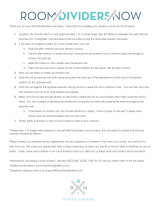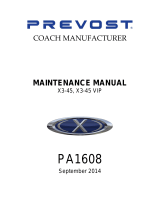SECTION V
ASSEMBLY
CAUTION
THE FOLLOWING SAFETY PRECAUTIONS SHOULD
BE THOROUGHLY UNDERSTOOD BEFORE
ATTEMPTING MACHINE ASSEMBLY.
1.Wear protective equipment such as , but not limited to, protection for eyes, ears, feet, hands, lungs and
head when assembling the equipment. Do not wear loose clothing or jewelry that may catch on equipment
moving parts.
2.Do not lift heavy parts or assemblies. Use crane, jack, tackle, fork t5rucks, or other mechanical devices.
3.Select an area for assembly that is clean and free of any debris which might cause persons working on the
assembly to trip.
4.Arrange parts to be assembled neatly in the work area and have tools or other mechanical assisting
devices in easy reach.
5.Inspect all parts and asemblies thoroughly and remove any sharp edges, grease, oil, or dirt which might
cause pieces to slip when handling.
6.Preview the asembly instructions in your operator’s manual berfore proceeding further.
7.If the assembly instructions call for parts or assemblies to be blocked up, use only blocking material that is
in good condition and is capable of handling the weight of the assembly to be blocked. Also insure that the
blocking material is on a clean, dry surface.
8.Never put hands or any other part of body under blocked up assemblies if at all possible.
9.Always wear goggles or safety glasses when hammering, grinding or drilliing metal parts.
10.If the assembly calls for welding or cutting, be sure that there are no flammable materials close at hand and
the bystanders have taken necessary precautions.
AFTER COMPLETING ANY ASSEMBLY STEP, THOROUGHLY READ THE NEXT STEP IN THE ASSEMBLY
INSTRUCTIONS BEFORE PROCEEDING WITH THAT STEP.
11.After completing assembly, thoroughly inspect the machine to be sure that all nuts, bolts, hydraulic fittings
or any other fastened assemblies have been thogoughtly tightened.
12. After completing assembly, be sure that all safety locking devices or guards are in place.
13.Before operating the machine, thoroughly read the operation section of this manual.
14.Before operating, read the maintenance section of this manual to be sure that any parts requiring
lubrication such as gearboxes are full to avoid any possible damage.
BEFORE OPERATING THE EQUIPMENT, IF YOU HAVE ANY QUESTIONS REGARDING THE PROPER
ASSEMBLY OR OPERATION, CONTACT YOUR AUTHORIZED BUSH HOG DEALER OR REPRESENTATIVE.
A. Attach hitch assembly to cutter bar assembly
using 1 x 9” pin, cotter pin, 3/8 x 2” bolt, and locknut.
The bolt should be installed through the welded
bushing. (Figure 5-1)
B. Slide breakaway assembly over bushing on
hitch mast and rotate 180 degrees to lock in place.
Fasten breakaway assembly to beam using 1 x 3-3/4”
bolt and locknut.
C. Pin butt end of cylinder and beam spring cush-
ion to frame using 1 x 8-1/8” pin, 3/8 x 2” bolt, and
locknut. Note that cylinder ports must be facing down.
D. Fasten opposite end of spring cushion to beam
using 1/2 x 2-1/4” bolt and locknut.
E. Pin parking stand in place.
F. Attach curtain support beam to the gearbox
using four 12mm x 40mm bolts and lockwashers.
G. Attach gearbox strap with 1/2 x 2” bolts, nuts
and lockwashers.
H. Attach cylinder lug and dirt shield bracket to
curtain support beam using two 1 x 5-1/4” pins, cotter
pins and flatwashers.
I. Attach dirt shield with 1/2 x 2-1/2” bolts, nuts,
flatwashers, lockwashers and spacer.
J. Attach upper end of dirt shield to dirt shield brack-
et with 3/8 x 1” machine screws, nuts and washers.
K. Attach rear bracket to curtain beam plate with
1/2 x 3” bolt, nut and lockiwasher.
L. Fasten front and rear curtain supports to sup-
port beam using 3/8 x 2-1/4” bolts and locknuts. Do
not over-tighten to allow curtain supports to pivot.
Attach curtain adjustment chain between beam and
frame as shown. (Figure 5-1)
M. Remove solid plug from butt end of cylin-
der and install vent plug. Plumb opposite end of
cylinder as shown in Figure 5-2. Be sure that restric-
tor is in place on elbow.
N. Pin rod end of cylinder to cylinder lug.
O. (GHM 900 and 1900 only) Connect cutter bar
helper spring to curtain support beam. Connect oppo-
site end of helper spring to frame.
P. Lay curtain over supports. Secure using 3/8 x
1” machine screws, flatwashers, lockwashers and
nuts. Use a tube clip to secure curtain to the left end
19























